Space mining: are we going to dig on other planets?
4th Jan 2024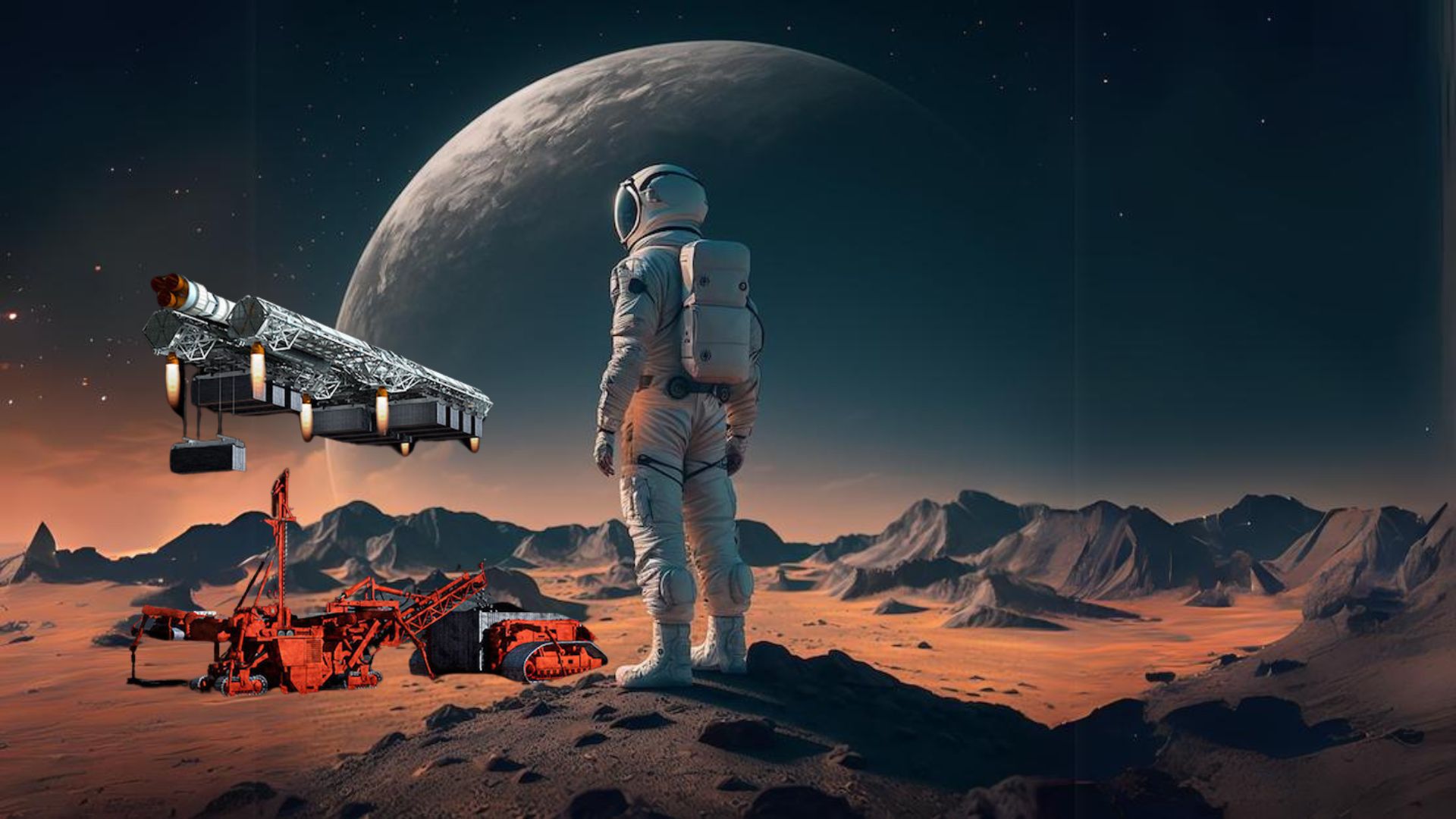
Over the last hundred years, subsoil extraction has increased more than 60 times. The growing world population and living standards require more resources, and this is becoming a serious problem. Many deposits are already depleted, and mining is becoming more difficult, costly and dangerous for the environment. Space resources can help, but how do you get them? In this article, we will talk about space mining, what are its realities, challenges, and prospects.
What is meant by space mining?
Space mining, also known as planetary, comet and asteroid mining, is a process of obtaining and processing raw materials from astronomical objects such as asteroids, comets, planets, and planetary moons.
Studying near-Earth space and the Solar System using powerful probe telescopes has allowed us to identify a large content of valuable resources that are scarce or expensive on Earth, for example, platinum, gold, iridium, and helium-3. Extracting these resources can help stimulate economic growth and improve people’s well-being and security.
In particular, mining in space could accelerate the transition to clean energy, which requires a significant increase in the production of copper, cobalt, and nickel, all of which are abundant in space.
Is it possible to mine in space?
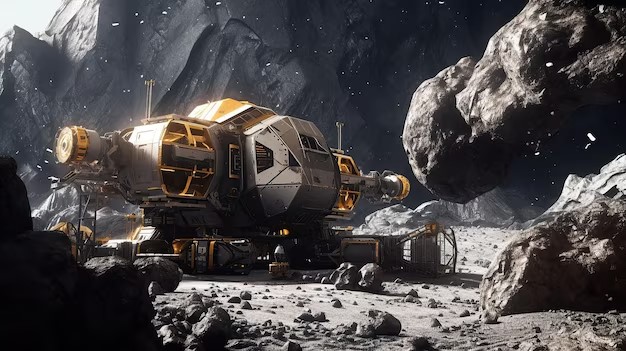
For now, this idea sounds like science fiction, but it could become a reality soon. Different celestial bodies have various characteristics that affect their mineability. The most promising objects today are the Moon, Mars and some asteroids.
- Moon mining: The closest object to Earth, it has low gravity, a solid surface, and a more or less studied composition. On the Moon, one can extract water, helium-3, rare earth metals, iron and silicon, etc. However, the Moon has several problems that can complicate the extraction process – temperature fluctuations, solar winds, micrometeorite bombardment, a thick layer of lunar dust, and the absence of an atmosphere.
- Mars: The fourth planet from the Sun has a thin atmosphere, moderate gravity, complex geology, and potentially habitable conditions. Mining Mars can give us water, carbon, nitrogen, oxygen, and other resources that can be useful for colonizing the planet. However, Mars also has some problems, such as its long distance from Earth (the flight takes about a year), strong sandstorms, radiation, and low temperatures.
- Asteroids: Depending on their composition, asteroids contain large deposits of metals such as iron, nickel, cobalt, platinum, and gold. They may also give us water, carbon, nitrogen, and other organic compounds. However, very low gravity, high speed, unstable orbit, and poorly studied composition can make excavation on asteroids too dangerous and economically unviable.
However, space minerals mining on the Moon, Mars, and near-Earth asteroids seems likely in the next few years. The way this new market develops, it looks like the Moon will be the first on this list – as our closest celestial body and the only place humanity has set foot on.
What are the space mining methods?
The very process of extracting minerals from the depths of other planets and satellites essentially repeats the terrestrial one, but there are nuances. Here are some potentially possible methods:
Surface extraction
This method involves landing on the surface of a celestial body and digging, drilling, raking or scraping material. It is suitable for hard rocky bodies such as the Moon, Mars, and asteroids. For example, the goal of NASA’s OSIRIS-REx mission was to collect a sample of surface loose soil from the asteroid Bennu and return it to Earth for analysis. The mission was successfully completed in September 2023, and now the NASA probe is heading to the next object – the asteroid Apophis.
Underground extraction
This method involves penetrating into the depths of a celestial body and extracting materials to the surface. Suitable for icy and volatile-rich bodies such as comets and some moons. For example, ESA’s Rosetta mission placed the Philae lander on the surface of comet 67P/Churyumov-Gerasimenko, which drilled into the comet’s nucleus and collected data on its composition.
Orbital extraction
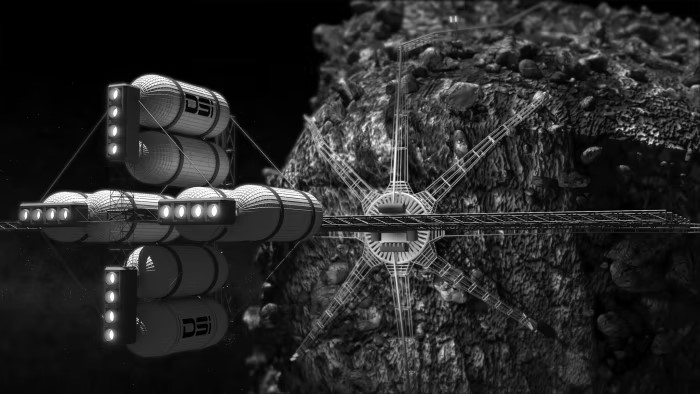
This case implies capturing a celestial body or part of it and placing it in a stable orbit around another body, such as the Earth or the Moon, where it is easier to mine. Suitable for small, low-gravity bodies such as asteroids and comets. The method was clearly demonstrated in the science fiction series For All Mankind (season 4, episode 1), where astronauts on the Martian space station tried to capture a small asteroid to move it into Mars orbit.
ISRU (In-Situ Resource Utilization)
ISRU involves processing ores and minerals into useful products on-site without transporting them to another location. This method is suitable for any type of resource that can be recycled and used in space, such as water, oxygen, building materials, and rocket fuel. For example, NASA’s Artemis lunar program plans to use ISRU to extract oxygen and water from lunar regolith and ice, which could be used for life support and production of rocket fuel for return to Earth and missions to Mars.
How profitable could extraterrestrial mining be?
Some experts estimate that mining in outer space can be very profitable if it is possible to reduce the costs of rocket launches, develop effective technologies, and provide legal protection. For example, the approximate total cost of resources:
- average platinum-rich asteroid – about $3 trillion;
- a comet or moon with frozen water – about $5 trillion;
- iron ore on the Psyche asteroid – $10 trillion;
- the entire asteroid belt – $700 quintillion, or $100 billion for every inhabitant of the Earth.
However, other experts believe that extraterrestrial mineral extraction may not be profitable if we consider the high risks, uncertainty, complexity, and project duration, as well as a possible drop in resource prices due to excess supply.
What are some problems with mining in space?
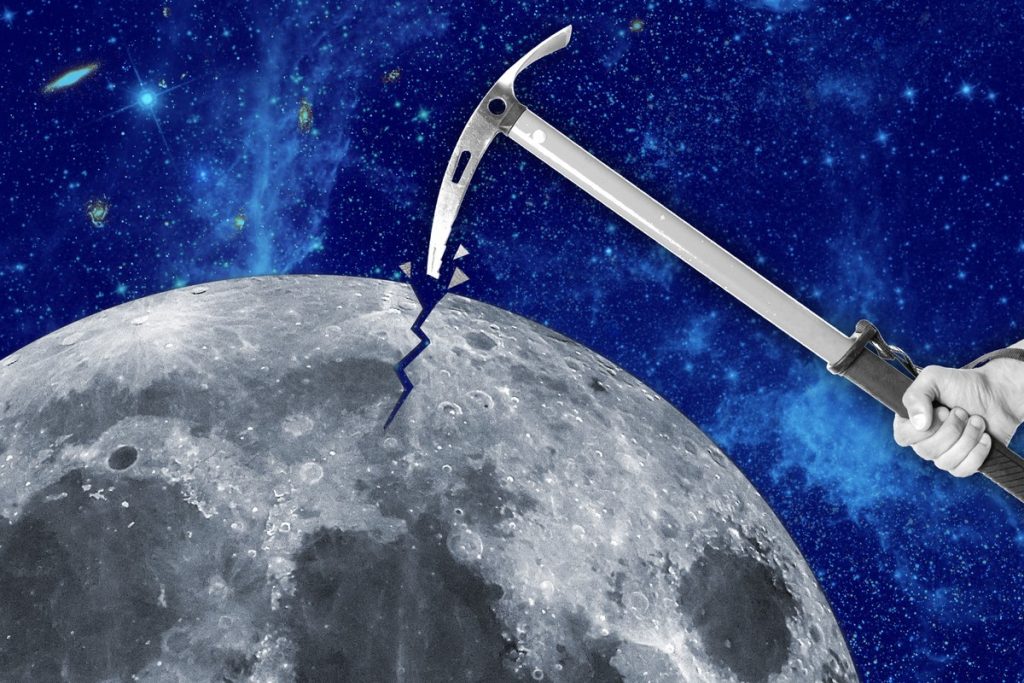
Extraterrestrial mining poses many technical, legal, ethical, and environmental challenges that must be resolved before it becomes a reality.
Technical challenges
To extract minerals in space, one requires advanced and reliable technologies that can operate in harsh and unpredictable environments, such as extreme temperatures, radiation, vacuum, gravity, storms, meteor showers, and dust. These technologies include spacecraft, launch vehicles, propulsion systems, sensors, robots, drilling equipment, processing plants, and communications systems. Developing, testing, and deploying these technologies requires a huge investment of money and time and must be carefully considered at every stage. However, this requires an understanding of the entire process from start to finish, while today, many calculations are hypothetical.
Legal challenges
So far, no laws and special bodies have been created to regulate this type of activity and answer the question of who owns which production regions, who will own the resulting resources, and who will be responsible for possible environmental and social consequences.
The modern legal framework for space activities is based on the 1967 Outer Space Treaty, which states that outer space is the shared heritage of mankind and that no country can claim sovereignty or jurisdiction over any celestial body. However, the treaty does not directly address the issue of mining in space, and there is no consensus on how to interpret and apply its principles.
Some countries, such as the United States and Luxembourg, have adopted national laws recognizing the rights of their citizens and companies to own and exploit space resources, but Russia and China oppose this approach and have not yet agreed to join forces with other players to resolve the legal component.
Ethical challenges
Mining other planets is a topic that gives rise to many ethical dilemmas and contradictions in society, even today. Some people argue that it is a necessary and beneficial activity that can advance scientific knowledge, economic development, and cosmic exploration, as well as provide humanity with valuable resources and opportunities for hundreds of years to come.
Others fear that the future industry could jeopardize the ecological balance and scientific and cultural heritage that the Moon and Mars represent, as well as divert attention and resources from the acute and pressing problems of humanity on Earth, such as poverty, hunger, human trafficking, dictatorship, low level of education, etc.
Is space mining bad for the environment?
Many reasonably believe that the new industry will lead to an increase in greenhouse gas emissions, waste, and noise associated with spacecraft launches and landings. Currently, about 120 launches are carried out worldwide each year, but with the development of asteroid and planet mining, this number will increase significantly. In addition, heavier rockets will be required to increase the payload volume, which, in turn, will lead to an increase in the amount of fuel necessary for launch. Finally, there is a risk of contamination or invasion by foreign microorganisms or materials that may be imported from space. This is fraught with the emergence of new diseases for which humanity has no cure.
It would seem that there are many dangers for the environment, but “Why is space mining bad?” is the kind of question that has more possible answers. Having mastered alien mines, we can leave many traces in space, just like we already did on Earth. Namely, we may litter the orbits of mined objects, damage their integrity with physical interference, deplete their resources, and change their natural balance.
Such interference could disrupt the ecosystem of the solar system and lead to irreversible consequences, such as increased radiation or gravitational changes, which could become a direct threat to the existence of our planet.
Are we currently mining in space?
At the moment, nobody mines outside the Earth; that is, no one extracts, transports, or processes resources from other astronomical bodies. However, all space countries, represented by private companies or government agencies, are, to one degree or another, involved in this process; namely, they conduct or plan research and development in the extraterrestrial mineral extraction field.
State agencies’ missions
- USA: NASA’s OSIRIS-REx mission aims to collect surface soil samples from the asteroids Bennu and Apophis and return them to Earth for analysis. The first stage of the mission – the collection and delivery of soil from Bennu – has already been completed, and the probe is heading towards Apophis.
- Europe: The ESA PROSPECT project plans to deliver a drilling and laboratory complex to the Moon to extract and analyse water and oxygen from the lunar regolith. The mission will be carried out using the Russian Luna 27 spacecraft.
- Japan: JAXA Hayabusa 2 completed its mission to collect samples of material from the asteroid Ryugu and return them to Earth. Scientists opened three capsules and, in two of them, found material similar to black sand.
- China: In 2020, CNSA’s Chang’e 5 mission collected more than one kilogram of lunar rock and soil samples on the far side of the Moon. Scientists estimate that lunar soil samples returned to Earth contain 120 parts per million (ppm) of water. Also, Chinese scientists discovered a new phosphate mineral, Changesite-(Y), in lunar basalt, which became the sixth mineral found by people on the surface of the Earth’s satellite.
Private companies
- Astrobotic Technology is working on a prototype of a robot capable of extracting water and methane ice at the poles of the Moon. These substances could be used to create fuel on the Moon and refuel ships to return to Earth, potentially cutting the cost of human lunar missions in half.
- Moon Express created a line of landing modules to deliver different payloads and perform missions on the Moon, including excavation and the use of lunar resources. The company also plans to place an observatory on the Moon.
- Deep Space Industries is developing a reconnaissance ship called Prospector that will explore asteroids for their resource value.
- Planetary Resources plans to use robotic spacecraft to identify, capture, and transport near-Earth asteroids to lunar orbit, where they can be mined and processed.
- Blue Origin is building the New Glenn heavy reusable rocket and lander for Moon transport flights to support the development and exploitation of lunar resources.
The list of private space mining companies is much larger and will obviously grow as the situation in the industry becomes clearer. In the meantime, read another article of ours to find out who is leading the lunar gold rush.
Is space mining a reality?
Space mining is not yet a reality, but experts predict that it could become so in the next 20-30 years. Enthusiasts are more optimistic and predict the industry start in this decade. However, many problems need to be solved, and clear mechanisms are yet to be defined.
In the For All Mankind series, people mastered helium-3 extraction on the Moon back in the 1990s, and at the beginning of the 21st century, they built a permanent base on Mars. But nations did it together, not separately. However, as time shows, science fiction sometimes becomes a reality, with minor differences. We just need to accept it as a forecast and draw the right conclusions.
References:
- Space Mining Size analysis
https://www.fortunebusinessinsights.com/space-mining-market-102669 - What is Prospect?
https://www.esa.int/ESA_Multimedia/Images/2020/10/What_is_Prospect - $100bn for every human? Space missions to explore gold and iron-rich asteroids
https://www.ibtimes.co.in/100bn-every-human-space-missions-explore-gold-iron-rich-asteroids-760332 - Mining in space could spur sustainable growth
https://www.pnas.org/doi/10.1073/pnas.2221345120 - “Mining in Space Is Coming”. Alex Gilbert/ April 26, 2021
https://www.milkenreview.org/articles/mining-in-space-is-coming - The problems with space mining no one is talking about
https://www.tribuneindia.com/news/schools/the-problems-with-space-mining-no-one-is-talking-about-366397 - ISRU (In-Situ Resource Utilization)
https://www.nasa.gov/mission/in-situ-resource-utilization-isru/ - Prospector-X
https://www.nanosats.eu/sat/prospector-x
![Beauty of the Pink Moon And Lyrid Meteor Shower in This Week’s Best Astrophotos [19-26 April] Beauty of the Pink Moon And Lyrid Meteor Shower in This Week’s Best Astrophotos [19-26 April]](https://orbitaltoday.com/wp-content/uploads/2024/04/Pink-Moon-is-on-its-way-above-the-mountains-1-300x300.jpg)
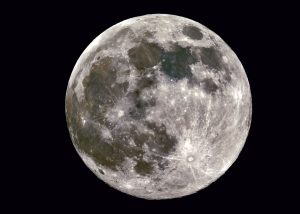
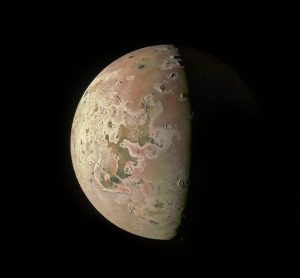



Thank you for your comment! It will be visible on the site after moderation.